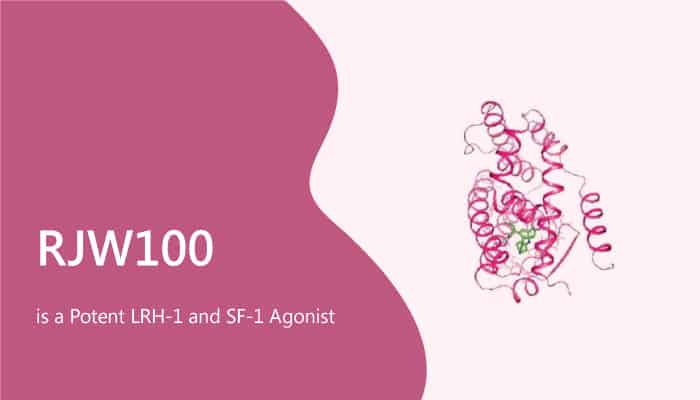Liver receptor homolog 1 (LRH-1, NR5A2) is a member of the nuclear receptor family. Specifically, LRH-1 plays a key role in regulating development, cholesterol transport, bile acid homeostasis, and steroid production. Besides, LRH-1 regulates hepatobiliary acid biosynthesis and cholesterol homeostasis and is the main controller of hepatobiliary. Therefore, the receptor may be a target for the treatment of cardiovascular disease 21 and cholinergic liver disease. Moreover, LRH-1 is expressed in human intestinal crypt cells and controls cell proliferation and differentiation. The expression of LRH-1 and its potential role in gastric cancer indicate that LRH-1 can affect tumor formation by accelerating cell cycle and promoting inflammation. Furthermore, there are phospholipids, phosphatidylglycerides, and phosphatidylethanolamine derived from Escherichia coli in the ligand-binding pocket of human LRH-1 and SF-1. RJW100 is a potent liver receptor homolog 1 (LRH-1, NR5A2) and steroidogenic factor-1 (SF-1, NR5A1) agonist.

RJW100 is a potent LRH-1 and SF-1 agonist.
How does RJW100 work on the target LRH-1 and SF-1? Let’s study it together. In the beginning, RJW100 is a potent LRH-1 and SF-1 agonist with pEC50s of 6.6 and 7.5, respectively. Meanwhile, RJW100 also causes strong activation of the miR-200c promoter.
In addition, RJW100 (compound 24-exo) treatment induces a significant dose-dependent increase in small/short heterodimer partner (SHP) transcripts beginning at 5 µM. Nonetheless, RJW100 clearly displaces the bound PIP2 phospholipid from SF-1 almost completely at 1 µM. Importantly, RJW100 causes strong activation of the miR-200c promoter and exhibits a strong ability to downregulate ZEB1 and ZEB2 proteins. Particularly, there is a clear dose-dependent shift in hLRH-1 LBD (complexed with no phospholipids) native PAGE migration upon RJW100 (0-100 µM) binding.
All in all, RJW100 is a potent LRH-1 and SF-1 agonist.
References:
Richard J Whitby, et al. J Med Chem. 2011 Apr 14;54(7):2266-81.